All Hands Help Out
We are cruising along the continental shelf of the Canada Basin in the Beaufort Sea, currently stopped at Station A. Oceanographic data has been collected here since at least 1995, so we are spending some time here to be sure that the scientists are able to collect all the necessary samples to continue the "picture in time" of this location. Samples are collected very close together because on the shelf as depth changes rapidly so do the measured factors.
The ship is busy, so in addition to writing dispatches .....
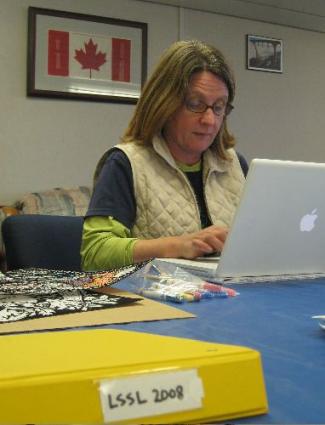 Posting journals. Photo by Dave Griffith.
Posting journals. Photo by Dave Griffith.
I have been put to work........
The Ice Tethered Profiler team (ITP) team from Woods Whole (WHOI) is testing their communications and release mechanisms. I helped them out in their shop (also the helicopter hanger).
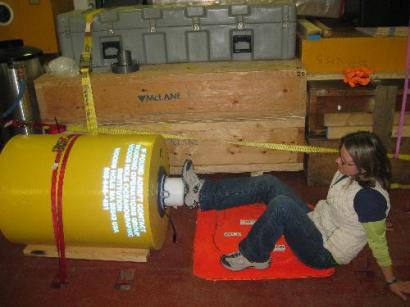 I am holding in the top of the ITP antenna dome with my foot to keep it from popping off while Rick works on the other end. The red hatch that I am sitting on is an escape hatch from the engine room below. photo by Jim Dunn
I am holding in the top of the ITP antenna dome with my foot to keep it from popping off while Rick works on the other end. The red hatch that I am sitting on is an escape hatch from the engine room below. photo by Jim Dunn
Leaving nothing to chance, Rick turns on and tests the electronics to be sure all is in order. He and Will Ostrom then set the buoy outside to see if it can find its location using its GPS system.
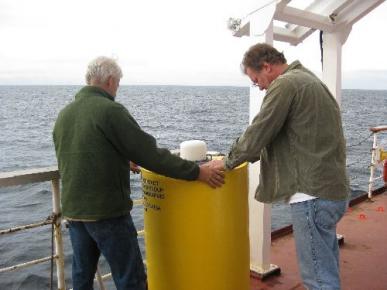 Will Ostrom and Rick Krishfield lash an ITP buoy to the ship's rails. The GPS in the buoy has been turned on to be sure that it is working properly, and now Rick will wait for the *phone call* from the buoy telling him where it is.
Will Ostrom and Rick Krishfield lash an ITP buoy to the ship's rails. The GPS in the buoy has been turned on to be sure that it is working properly, and now Rick will wait for the *phone call* from the buoy telling him where it is.
To prepare for deploying and recovering moorings, Jim Dunn runs underwater tests on the release mechanisms.
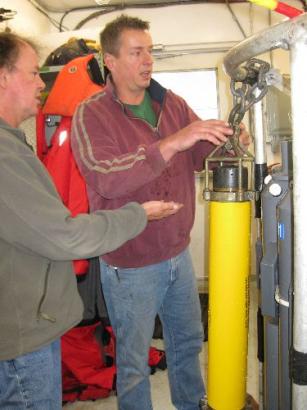 Hugh Maclean (left) helps Jim Dunn remove a acustic release mechanism from the rosette. Jim sent the mechanism down to 2000 meters to be sure that it was working.
Hugh Maclean (left) helps Jim Dunn remove a acustic release mechanism from the rosette. Jim sent the mechanism down to 2000 meters to be sure that it was working.
Because so many samples are being taken at Station A, I have been helping out in the CTD shack, where the rosette is brought after each cast.
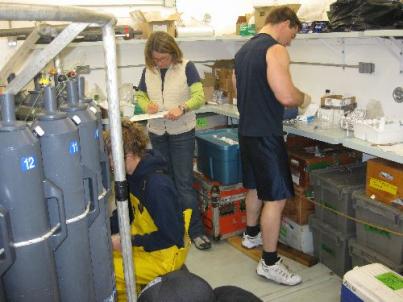 A good job for a teacher: I am ensuring that each sample is drawn and recorded properly from the rosette. Photo by Hugh Maclean
A good job for a teacher: I am ensuring that each sample is drawn and recorded properly from the rosette. Photo by Hugh Maclean
Being the sample cop is an appropriate job for a middle school teacher!
 Wink
Wink
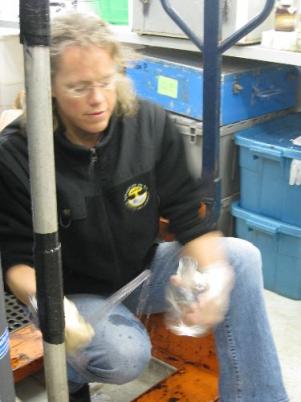 Sarah Zimmerman draws a sample.
Sarah Zimmerman draws a sample.
Two scientists went out in the Zodiac to collect undisturbed Station A water samples. They collected water at the surface, at 5 meters and at 10 meters deep.
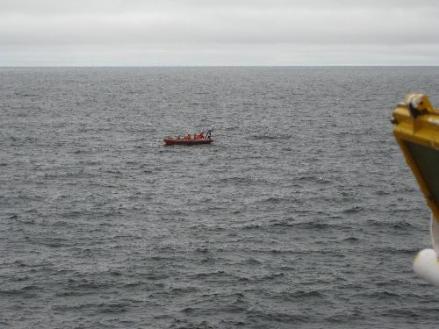 A sense of scale: the Zodiac is a small boat, and the Arctic ocean is a very, very big ocean
A sense of scale: the Zodiac is a small boat, and the Arctic ocean is a very, very big ocean
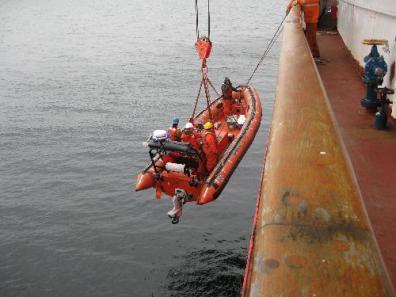 Ever wondered how a zodiac gets off and on the ship? With a winch, of course!
Ever wondered how a zodiac gets off and on the ship? With a winch, of course!
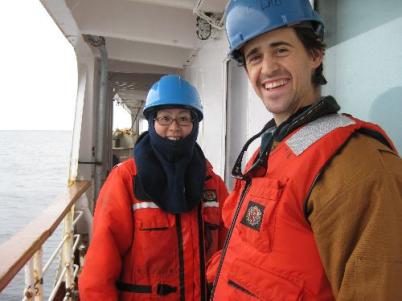 Michiyo Kawai and Dave Griffith back on board the LSSL. Dave compared the experience of working in a small boat on a big ocean to *reading a book in the car*-- Lots of staring right in front of your nose while moving.
Michiyo Kawai and Dave Griffith back on board the LSSL. Dave compared the experience of working in a small boat on a big ocean to *reading a book in the car*-- Lots of staring right in front of your nose while moving.
We are in mostly open water now so when we cruise, we move fast! We expect to hit ice within the next week.
So long, for now, from the Louis

